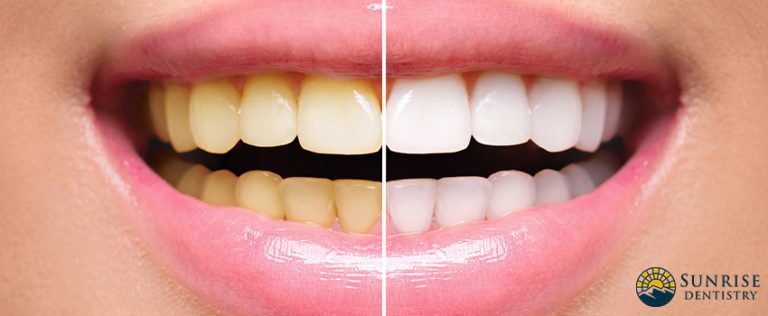Breastfeeding is a crucial part of your bond with your baby.
Breastfeeding allows you to provide your baby with the nutrients and protection they need against sickness while connecting with them to comfort them day and night.
Like most parents, you’ll have new concerns as your baby grows older. Some dentists may tell you that breastfeeding can cause tooth decay, while some might recommend early weaning or no night nursing.
Let us help you have a better view of things. Here are some things you need to know about breastfeeding and how it affects your baby’s oral health.
Does Breastfeeding Cause Cavities?
Breastfeeding and tooth decay are connected, but not in the way you think right now. Dr. Brian Palmer was a dentist who studied the skulls of children born a thousand years ago. What’s interesting about his study was that he almost didn’t find any cavities in their teeth. This is perhaps what led him to include an interesting quote from an anthropologist in his publication that said that evolution would have selected against breast milk if it caused tooth decay.
Here are a few more tidbits about breastfeeding and cavities that you should know about:
Mechanics of Breastfeeding and Bottle Feeding
Something that you should learn about breastfeeding and cavities is that the mechanics of breastfeeding and bottle feeding are different.
The absence of cavities Dr. Palmer observed in his studies made him believe that the mechanics of breastfeeding makes it difficult for breast milk to stay in a baby’s mouth for too long. Babies need to suck to get breast milk out of the nipple, and when they suck, the breast milk goes straight into their throat. They have to swallow before they suck again.
On the other hand, baby bottles will drip formula, juice, or milk into the baby’s throat even if they don’t suck. Liquids may pool around their teeth and gums if they don’t swallow them. The artificial nipple of baby bottles is also shorter, which means formula, milk, or juice pass over the teeth and gums before a baby can swallow them.
Breast Milk vs. Formula
Here’s something to lessen your worries about breastfeeding and cavities: research suggests that breast milk plays a part in tooth decay prevention. Breastmilk is rich in components that inhibit cavity-causing bacteria. It has antibodies that can potentially stop bacterial growth and lactoferrin, an active human milk component with bactericidal properties. Breast milk also actively deposits phosphorus and calcium on teeth, strengthening them.
On the other hand, baby formula may have a hand in tooth decay development. A study found that certain formulas can dissolve tooth enamel, increase the mouth’s acidity, and support bacterial growth that eventually causes tooth decay.
Cavities and Streptococcus mutans
Cavities in babies are also linked to Streptococcus mutans (S.mutans), a bacteria found in the mouth that severely damages tooth enamel in the presence of sugar. Babies get infected with S. mutans when they share food and utensils with adults or when adults kiss them on the mouth. This makes it essential for parents and other people caring for the baby to have good oral health.
Benefits of Breastfeeding for Oral Health
Most new parents have questions about breastfeeding and teeth development and how it benefits their babies. Here are some of the benefits of breastfeeding for your baby’s oral health:
Build Better Bite
Recent studies have shown that babies breastfed exclusively for the first six months of life were less likely to develop issues with their teeth alignment than babies breastfed for shorter periods or not at all.
However, this doesn’t mean your baby won’t need braces someday. Genetics, thumb sucking, and pacifier use can also affect their teeth’ alignment. It’s best to take your baby to a dentist regularly who can monitor the eruption of their teeth and that they’re coming out at the correct time.
No Weaning Required
Weaning is the concern most often raised regarding breastfeeding and teething. Do you stop breastfeeding when your baby’s first teeth come out? If you don’t want to stop, it’s best to carry on.
The American Academy of Pediatrics recommends breastfeeding during the first year of a baby’s life. However, the World Health Organization encourages mothers to breastfeed for at least two years. You should only stop breastfeeding if you feel it’s the best for your baby and yourself, not because their teeth are coming in.
Reduces Risk for Baby Bottle Tooth Decay
Exclusive breastfeeding also reduces the risk of baby bottle tooth decay caused by prolonged and repeated exposure of baby teeth and gums to sugary drinks. It is also more common when babies are put to sleep with bottles containing formula, milk, or fruit juice.
Things To Remember When Breastfeeding
Here are other things parents should remember when they’re breastfeeding.
Take good care of yourself.
Learning about breastfeeding and cavities and putting your baby’s well-being is well and good; however, don’t forget to take care of yourself. Sometimes, moms don’t take care of themselves as they used to before having their babies. They may forget to do basic care stuff like brushing their teeth.
Oral health care is important for a mom because she is her baby’s primary caregiver; the simple sharing of a spoon or kissing a baby’s mouth can transmit cavity-causing bacteria.
Moms should also stay hydrated, particularly if they’re breastfeeding. Not drinking enough water might lead to a dry mouth, which increases the risk for gum diseases and cavities.
Moms, remember: an empty cup cannot fill another.
Check your medications.
You should consult your dentist, pediatrician, and personal physician if you have to undergo a dental procedure that involves medication while breastfeeding. You can still take some antibiotics that will not harm your baby.
The U.S National Library of Medicine’s Drugs and Lactation Database is another helpful resource for breastfeeding moms. They can search for any medication to find out about its effects on the baby and themselves and if they can use an alternative. Still, it’s best to discuss this with your doctor, dentist, or pediatrician before taking any medication.
Breastfed babies can still get cavities.
If there’s one thing you should know about breastfeeding and cavities, it’s this: breastfed babies can still get cavities if you don’t clean their gums and teeth. Breast milk is natural and more like water, but it still has sugar. Taking care of your baby’s teeth from the get-go is important, even when they still don’t have their teeth. Wipe their gums daily with a moist, clean gauze pad or washcloth. Brush your baby’s teeth once they erupt using fluoride toothpaste no larger than a small grain of rice.
Visit Sunrise Dentistry today.
Reading about breastfeeding and cavities is sometimes not enough; it’s still best to approach a dentist, doctor, or pediatrician for any concerns about breastfeeding. Our dentists near Pagosa Springs are more than capable of answering your questions and providing you and your baby with the best oral care you need. Call us today, and we’ll gladly answer any of your queries and concerns.





